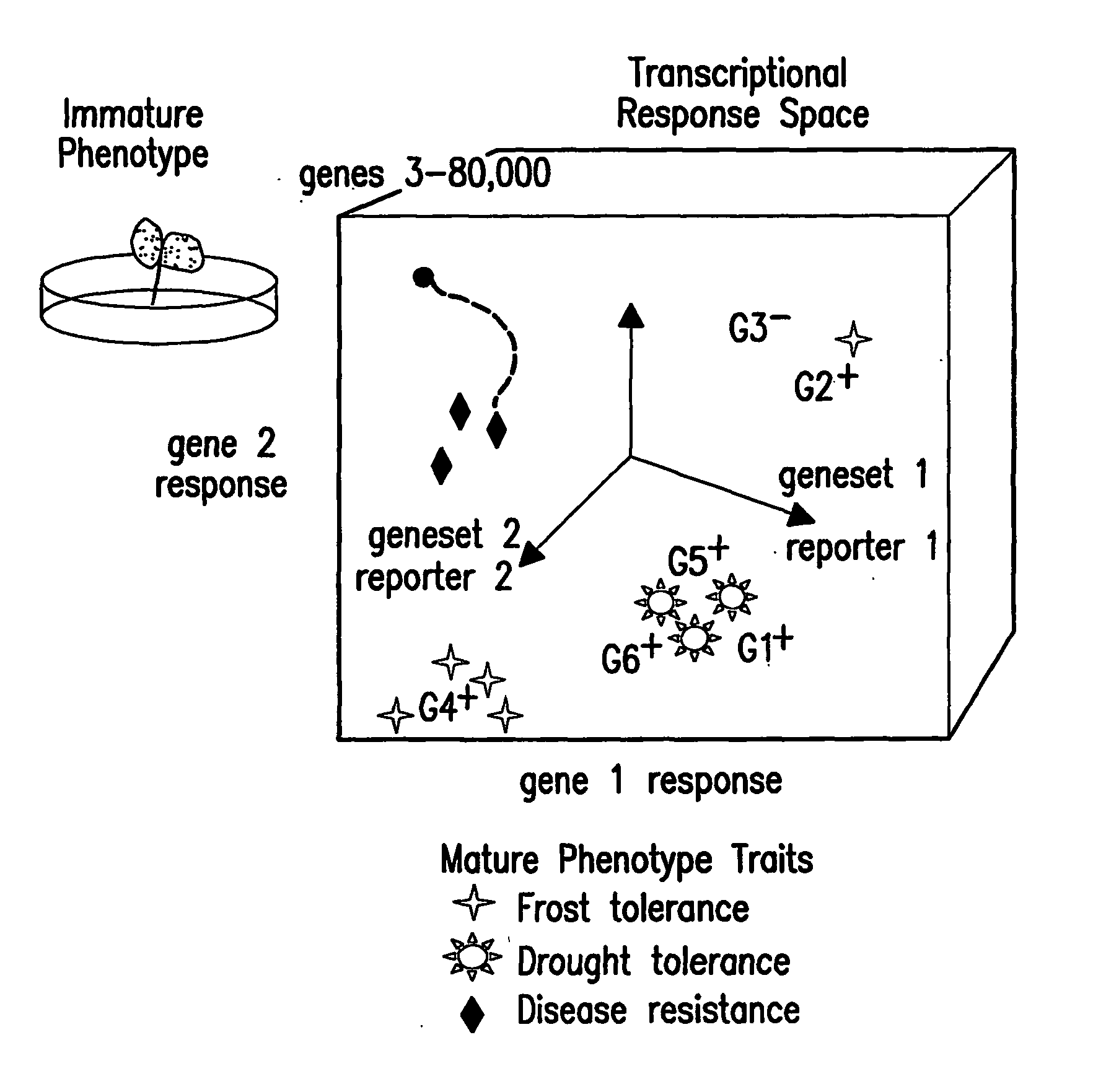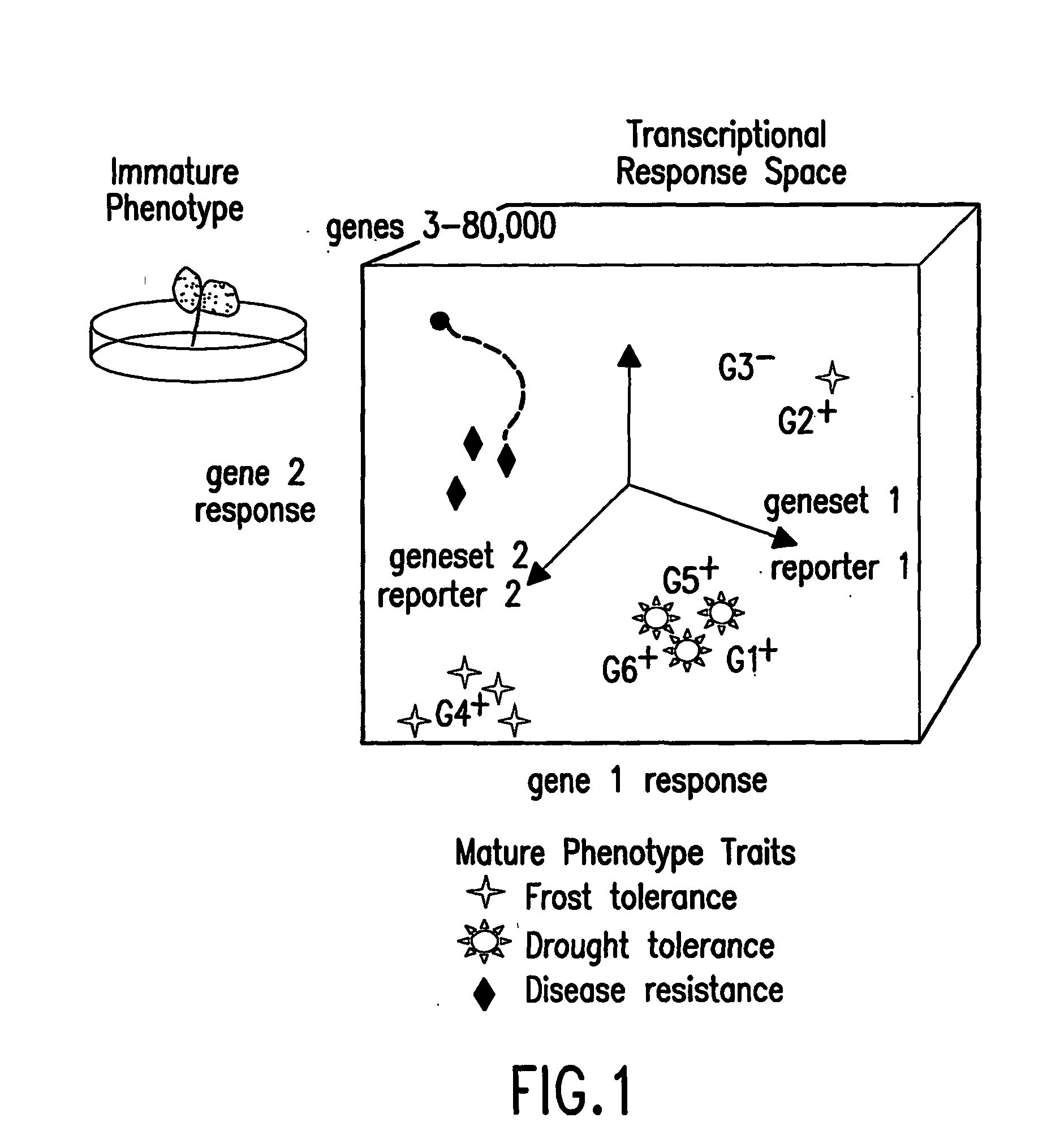Methods for genetic interpretation and prediction of phenotype
a genetic interpretation and phenotype technology, applied in the field of genetic interpretation and prediction of phenotype, can solve the problems of difficult to achieve, limited use of genetic engineering to produce desired phenotype, and long process of chromosome walking from marker to gen
- Summary
- Abstract
- Description
- Claims
- Application Information
AI Technical Summary
Benefits of technology
Problems solved by technology
Method used
Image
Examples
example 1
6.1 Example 1
Generation of Transcript Profiles for A Set of 186 Deletion Strains In Yeast
6.1.1 Materials and Methods
Construction and Growth of Yeast Strains
[0279] Deletion strains were constructed as described in Winzler et al. (1999) Science 285:901-06 using a polymerase chain reaction (PCR)-mediated gene disruption strategy that exploits the high rate of homologous recombination in yeast. Groups of 20 mutant strains were streaked to single colonies from glycerol stocks frozen at -80.degree. C. onto fresh plates containing yeast extract, peptone and dextrose ("YPD plates"). For each group of 20 mutants, a new plate of the wild type strain was also streaked. Plates were incubated in a 30.degree. C. incubator for 40-60 hrs, until well-isolated colonies reached a size of approximately 1-2 mm. Plates were stored at 4.degree. C. wrapped in Parafilm.RTM..
[0280] The mutants and wild-type control were grown from colonies inoculated into sterile liquid synthetic complete ("SC") media from t...
PUM
| Property | Measurement | Unit |
|---|---|---|
| Fraction | aaaaa | aaaaa |
| Fraction | aaaaa | aaaaa |
| Fraction | aaaaa | aaaaa |
Abstract
Description
Claims
Application Information
 Login to View More
Login to View More - R&D
- Intellectual Property
- Life Sciences
- Materials
- Tech Scout
- Unparalleled Data Quality
- Higher Quality Content
- 60% Fewer Hallucinations
Browse by: Latest US Patents, China's latest patents, Technical Efficacy Thesaurus, Application Domain, Technology Topic, Popular Technical Reports.
© 2025 PatSnap. All rights reserved.Legal|Privacy policy|Modern Slavery Act Transparency Statement|Sitemap|About US| Contact US: help@patsnap.com



